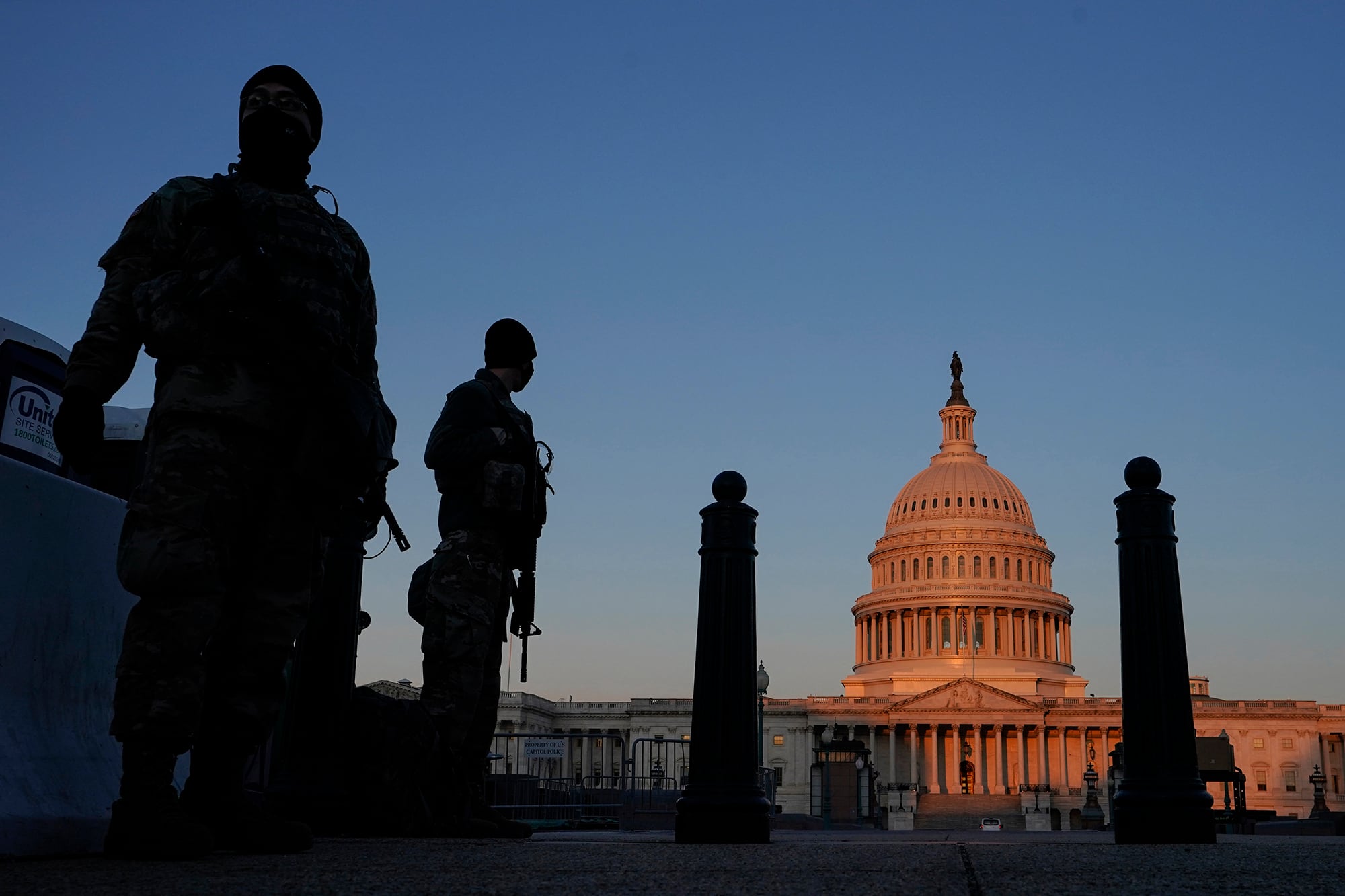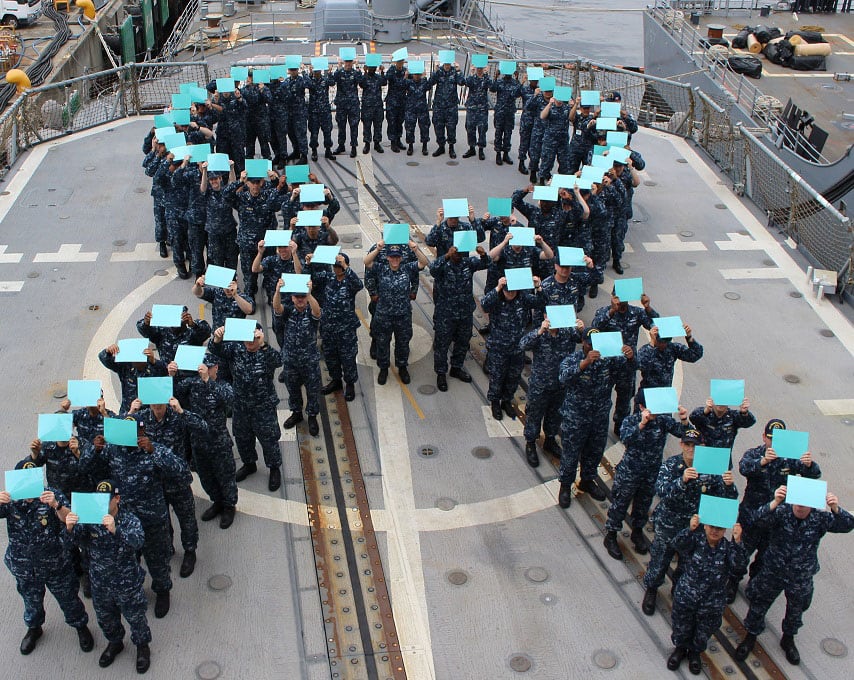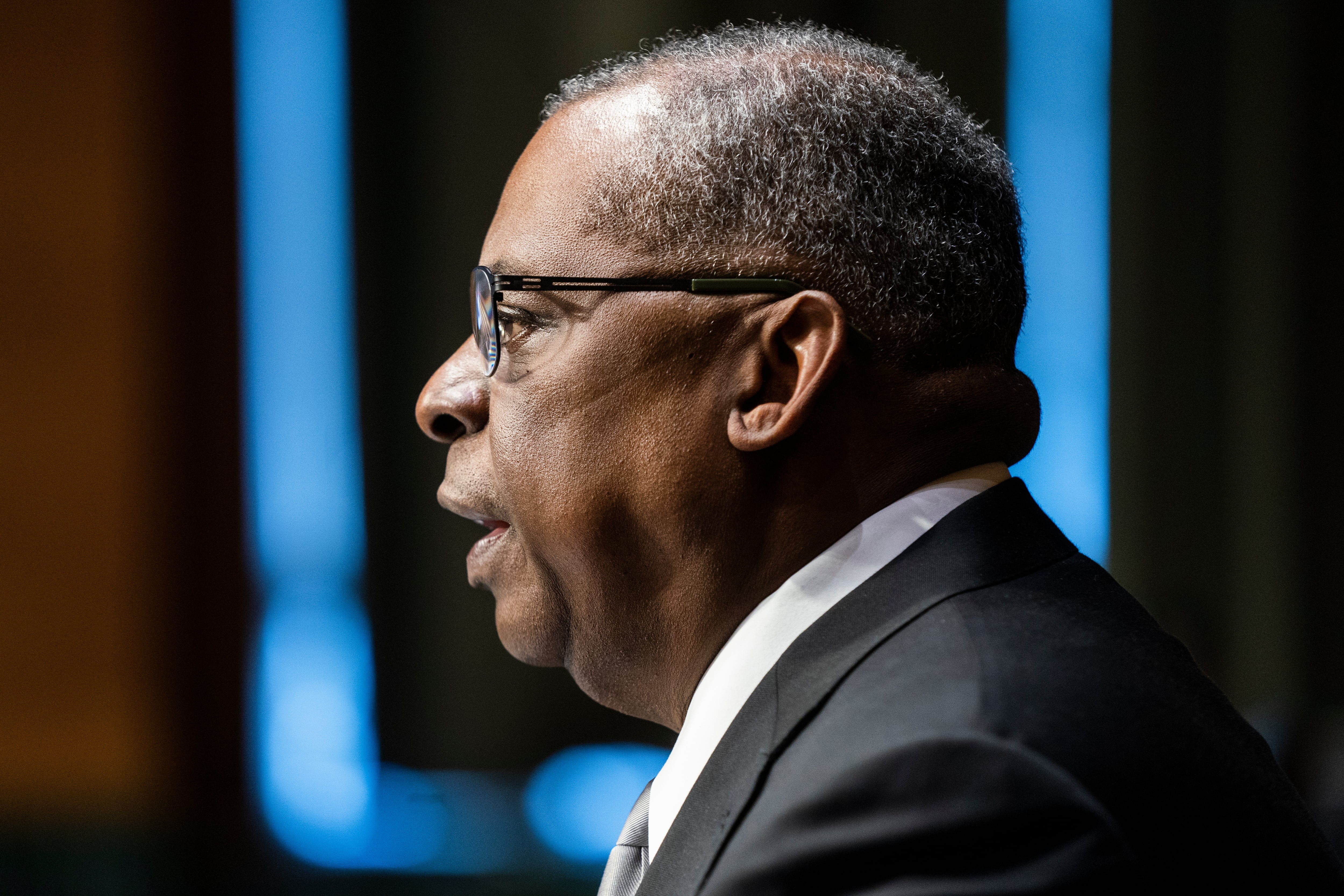Every unit in the military has until April 1 to sit down with its troops and talk about what extremism is and why it’s incompatible with military service, but that training has proven to look very different across formations.
Some troops who responded to a Military Times call-out said their trainers made comments undermining the stand-down during the discussions, while others were disheartened by how short and non-interactive their stand-downs were. Others, though, said their commands went above and beyond, and they appreciated the effort.
“The stand-down script seemed forced and leadership at times would make it a verbal point that ‘we have to do this,’ obviously not authentically interested in leading the discussions or covering the required topics,” a Naval Air Station Jacksonville, Florida, lieutenant told Military Times. “They also seemed reluctant to have in-depth discussions, brushing off questions, or just moving the conversation to the next topic. It was very surface-level, without significant substance.”
Defense Department guidance for this one-day stand-down includes a few discussion points and a requirement to report its completion. Officials have said it’s open-ended to allow commanders to tailor it to their troops, but according to some, that has looked more like the bare minimum.
Part of this was by design: Defense Secretary Lloyd Austin put out some rough guidance that included the oath of office/enlistment, case studies of extremism and some discussion questions and answers.
The idea was for commanders to take the lead on how it would be implemented, with the ability to add to it, make it remote or otherwise adjust it according to each unit’s priorities.
“For us here at the Pentagon, we’re far detached from that,” Senior Enlisted Advisor to the Chairman Ramon Colon-Lopez. “So we have to be able to trust those commanders in the field to be able to fix the behavior.”
At Seymour Johnson Air Force Base, North Carolina, according to an enlisted airman, the one-day training was cut down to 30 minutes because leadership deemed it too time-consuming.
“Typically I don’t really complain but this seems to be the attitude towards every non-mission training,” he told Military Times, adding that a recent suicide training was also cut down to five minutes after an accompanying video failed to work.
“Forced” was a common sentiment among troops who responded to Military Times’ call-out.
“There were many discussion questions but none were put to the group for discussion,” a Virginia Beach, Virginia, petty officer 1st class said. “He gave the question, read the answer and clicked through.”
Some people just looked at their phones during the training, she said, with about 30 military members and civilians present. The senior enlisted leader who led the training seemed to believe that he was not able to expand upon the Pentagon’s basic guidance.
“It was very detached training and it was stated many times where the chief said, ‘I didn’t make this, we were mandated to give this training exactly like this,’ or, ‘This isn’t my opinion, it’s what is in the PowerPoint, so these are the rules,’ “she said. “At the section where it listed possible punishments for military members, he even said, ‘I’ve never even seen anyone actually charged with this.’ "
RELATED

“The leadership sets the tone for the workplace,” she added. “It was clear that this leader wouldn’t punish anyone for these offenses, which lets sailors know they don’t have to change their words or actions.”
Multiple respondents said that their trainers approached the stand-down as an inflexible set of blocks they had to check, which isn’t how DoD guidance described the training.
A set of Navy stand-down slides, provided to Military Times by a reserve unit’s training officer, includes mechanisms for reporting extremist behavior, as well as a slide solely devoted to prohibited social media behavior.
And notably, there are slides with detailed scenarios: Whether it’s all right to talk about the Black Lives Matter movement, OK to display a Confederate flag in one’s apartment or make threatening comments toward lawmakers online.
At the Washington Navy Yard, according to a civilian who reached out to Military Times, his department’s discussion felt “rudderless.”
“One of the older guys was sidetracked and kept saying stuff like, ‘What about the First Amendment?’ and, “I miss the days you could just talk to people,’ " he wrote.
The divide seemed generational, and definitely racial, he added, on how the training was received.
“Ultimately most of us chose not to say too much in the meeting, past the guy asking if attending a MAGA rally or liking MAGA stuff on social media would be flagged behavior, which we all concluded would not be flagged,” he said.
His story touches on some feedback the military’s senior-most leaders are grappling with. Anecdotally, Colon-Lopez said, there is a lot of “what about...?” that comes up when examples of right-wing ideology are called out as extreme.
Particularly, he said, when it comes to the National Guard deployments to secure the Capitol after the Jan. 6 insurrection, troops have asked their leadership why the Guard is needed there, but not to respond to protests and rioting in Seattle, for example.
Technically, activating troops in Seattle would be the Washington governor’s decision, while in the District of Columbia, it’s a DoD decision made at the behest of one of several jurisdictions within D.C. In the Capitol’s case, it’s the resident police force who asked for Guard presence.
RELATED

Still, the distinction between attacking a closed government building during a congressional proceeding and protests against police killings of unarmed Black people, which have devolved into looting and violence in some cities, is not clear for everyone, Colon-Lopez said.
“We cannot confuse a First Amendment grievance because of social injustice … and some of the criminals that latched on to go ahead and loot, destroy and commit other crimes, all right?” he said.
Some positive reviews
Not all of the stories were negative, though. A drill sergeant candidate at Fort Jackson, South Carolina, told Military Times his stand-down was “some of the best in-person training I’ve ever had.”
“It was nice to have an actual class that was properly facilitated, rather than the usual, ‘Read the slide and let’s just get this over with,’ " he said.
Specifically, his platoon, made up of soldiers who enlisted between 2001 and 2016, took a look at their own service and pointed out the changes in attitudes and perceptions they had seen over that period.
“We brought up different reasons why and how extremism made it into our ranks and ... that whatever we encountered could essentially ruin the Army in the long run,” he said.
For drill sergeants the issue is particularly poignant, because they are charged with bringing up the next generation of soldiers, teaching them what service is and isn’t about.
“With most of us going to [basic combat training] after we graduate the academy, we looked at the different warning signs and how we can use those to see what trainees would stick out for this type of behavior,” he said.
Others had a more mixed bag of reactions. A Navy intelligence specialist 2nd class at Royal Air Force Molesworth, U.K., told Military Times that his unit’s leaders were “knowledgeable and passionate,” setting up the stand-down as an open, no-rank discussion that they took seriously.
The IS2 added, however, that he felt there was too much black-and-white in the examples given, which included some case studies from Austin’s guidance.
“I was hoping for more actionable training on combating the low-level type stuff that shapes the culture ― not just being able to recognize a military member attempting to commit a full on terrorist attack,” he said.
His comments touch on a broader issue that the military will have to confront as it runs down the problem of extremist ideology.
There are stark parallels to the sexual assault prevention and response effort, which began in earnest roughly a decade ago. At the time, training materials were very focused on what not to do. “Don’t rape,” is the message a lot of troops received.
RELATED

But in the intervening years, study upon study found that other indicators, like sexual harassment and toxic command climate, were directly tied with the likelihood that a sexual assault would occur within a command.
Much of that research became what is now bystander intervention training, which encourages troops to speak up when they see anything questionable, whether it’s sexual harassment or substance abuse. That can also be translated to troops who make racially charged comments or casually rant about a particular political party.
“I’ll be the first to tell them: ‘Hey, don’t forget: we are apolitical,’” Colon-Lopez. “Not the time, not the place.”
Comments that target particular groups can also have consequences.
“If someone is talking about demeaning a woman or a man, or talking about the things they would like to do to them — don’t forget, we have articles to go ahead and punish you under that,” he added.
But that kind of action requires someone to report it and a commander who takes it seriously enough to write it up, which is not guaranteed.
“My own words: ‘That is not how we treat our brothers and sisters. That is not how family speaks to each other,’” he offered, as a quick, basic response to make it clear that demeaning language, racist or not, isn’t tolerated.
“An intervention doesn’t mean to castigate someone because they’re talking about something,” he added. “It’s helping them understand that, hey, that is not compatible with military life, and you need to correct yourself.”
Going forward
Almost as soon as the stand-down was announced, Pentagon leaders were defending it with the understanding that it was not meant to be a cure-all for domestic extremism in the services.
RELATED

Though there are no requirements for feedback to be reported up the chain of command, Colon-Lopez said, he has seen some suggestions and lessons learned.
“So I suspect that based on the knowledge that the units are going to bring forward, there will be a group created to be able to deal with the issue of extremism,” he said, not dissimilar to the diversity-and-inclusion task forces stood up by DoD and the services in the wake of Black Lives Matter protests last summer.
Colon-Lopez said there will be a review period after the stand-downs are complete, but did not have a timeline for next steps.
He also expects reports of extremism to go up, now that troops have a better idea of what to look for, though he did not offer specific examples.
“There hasn’t been data pushed out on an increase in reporting, but naturally, that’s what happens,” he said.
Still, the question remains how DoD proposes to not only gets it arms around whatever level of extremism problem it has ― Austin has said it’s likely more than leaders think but less than “the media” portrays it ― and to track its progress in squashing it.
RELATED

Leaders have said repeatedly that they haven’t compiled data on investigations into extremist behavior or activity, nor do they have readily available numbers on how many recruits are denied contracts each year based on extremist ideology found during background checks, or how many are involuntarily separated every year because of extremist behavior.
“What we’re getting at right now, because we see that we need to collaborate a lot more … we need to have a common understanding, and that is the direction that the military needs to go,” Colon-Lopez said.
Meghann Myers is the Pentagon bureau chief at Military Times. She covers operations, policy, personnel, leadership and other issues affecting service members.




